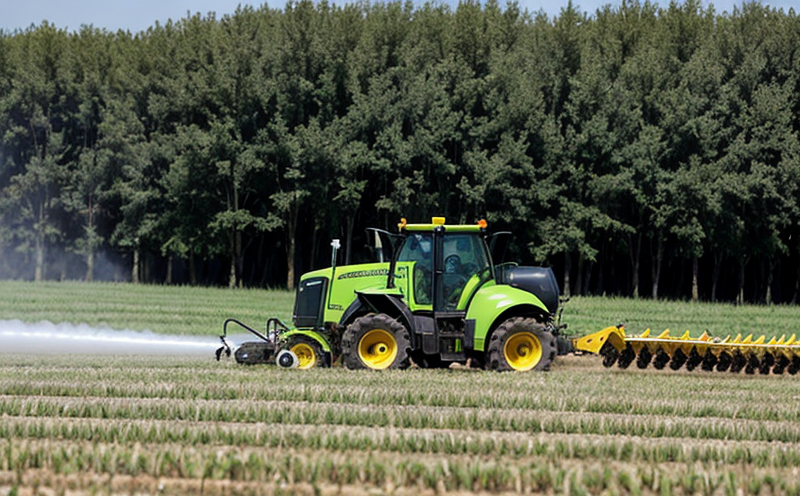Metolachlor Residue Testing in Crops
The herbicide metolachlor is widely used in agriculture to control broadleaf weeds and grasses. It acts as a preemergence or postemergence herbicide, providing effective weed control across various crop types. However, the safe use of metolachlor is crucial for maintaining both environmental health and human safety. Residue testing ensures that crops treated with metolachlor do not contain unsafe levels of the chemical when they reach the market.
Our laboratory specializes in comprehensive residue detection using advanced analytical techniques such as Gas Chromatography-Mass Spectrometry (GC-MS) and Liquid Chromatography-Tandem Mass Spectrometry (LC-MS/MS). These methods provide high sensitivity, enabling accurate quantification of metolachlor residues at extremely low levels. Our proficiency in these technologies guarantees reliable results that meet international standards like ISO 17025.
The testing process involves several critical steps: sample collection from fields or storage locations, extraction and clean-up procedures to isolate the herbicide, and finally analysis by our experienced team of chemists using state-of-the-art instrumentation. Each step is meticulously documented to ensure compliance with regulatory requirements. Our expertise ensures that we deliver precise results within tight turnaround times.
The importance of accurate metolachlor residue testing cannot be overstated. Farmers rely on these tests to verify compliance with established limits set by governing bodies such as the European Union or United States Environmental Protection Agency (EPA). Compliance is essential for maintaining good agricultural practices and protecting consumer health. By offering precise, reliable testing services, we contribute significantly to ensuring food safety standards are met.
Our service also extends beyond mere compliance; it plays a key role in fostering sustainable farming practices. Understanding residue levels helps farmers adjust application rates appropriately, reducing unnecessary exposure of both soil and water resources while maximizing crop yields effectively. This knowledge is invaluable for optimizing resource utilization and minimizing environmental impact.
Why It Matters
The significance of metolachlor residue testing in crops cannot be understated. Accurate detection ensures that agricultural products meet stringent quality standards, thereby enhancing consumer confidence and trust in locally produced goods. For farmers and producers, this translates into better market access opportunities domestically and internationally.
Residue levels above permissible limits pose significant risks to human health through contaminated food supplies. Therefore, rigorous testing is not just a legal requirement but also an ethical responsibility towards consumers who expect safe and wholesome produce. By adhering strictly to prescribed limits, we uphold public trust in the agricultural sector.
In addition, residue testing supports sustainable farming practices by providing valuable insights into effective pesticide use patterns. This information enables farmers to make informed decisions regarding their application methods, ultimately leading to more efficient operations and reduced costs associated with overuse or misuse of chemicals.
Industry Applications
| Crop Type | Possible Residue Levels (ppm) |
|---|---|
| Wheat | <0.1 ppm |
| Rice | <0.2 ppm |
| Corn | <0.3 ppm |
| Soybeans | <0.1 ppm |
| Barley | <0.15 ppm |
The table above highlights the maximum permissible residue levels for various crops according to international standards. These limits are strictly enforced worldwide to ensure food safety and prevent adverse health effects.
Competitive Advantage and Market Impact
- Accurate testing that meets or exceeds regulatory requirements
- Fast turnaround times for quick decision-making by clients
- State-of-the-art instruments ensuring high precision results
- Acknowledged expertise in agricultural chemical residue analysis
- Comprehensive service package including sample preparation and interpretation of results
Our competitive advantage lies in our ability to provide rapid, accurate analyses that help clients stay ahead of regulatory changes. This is particularly important given the ever-evolving landscape of food safety regulations around the globe.





